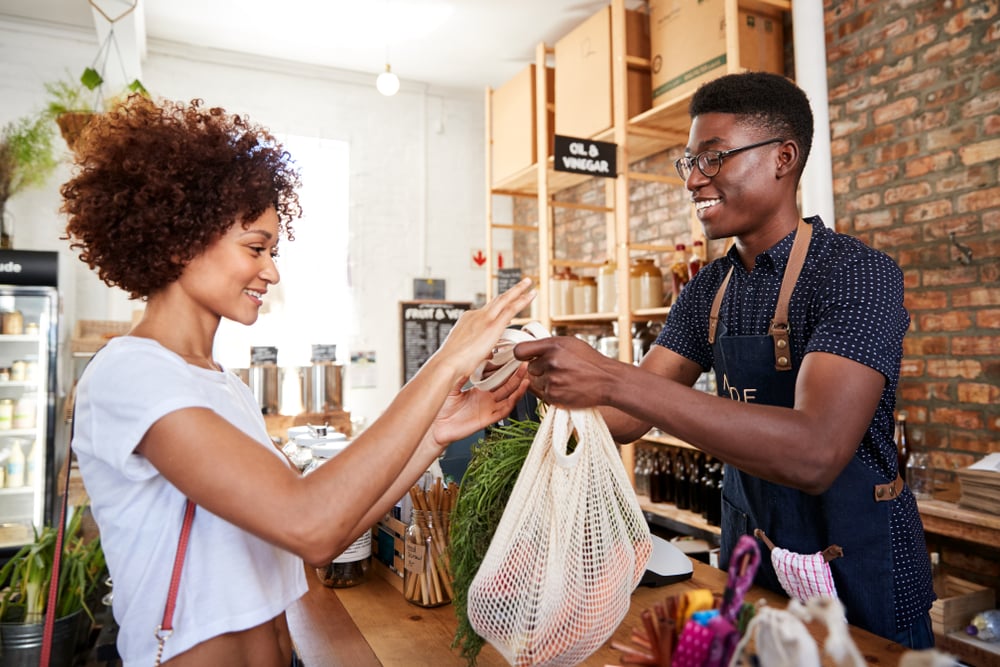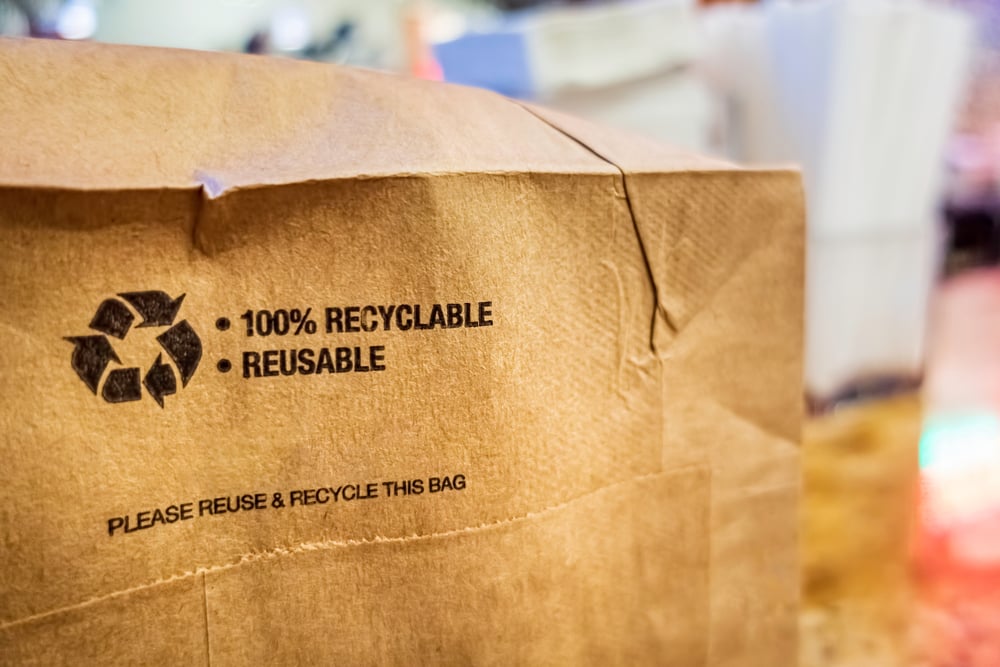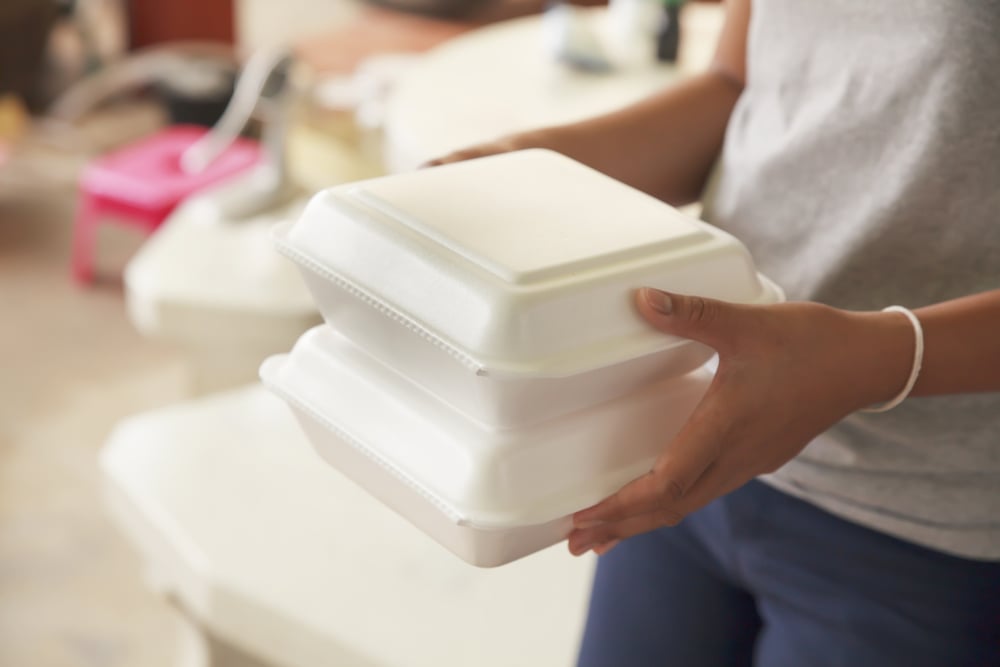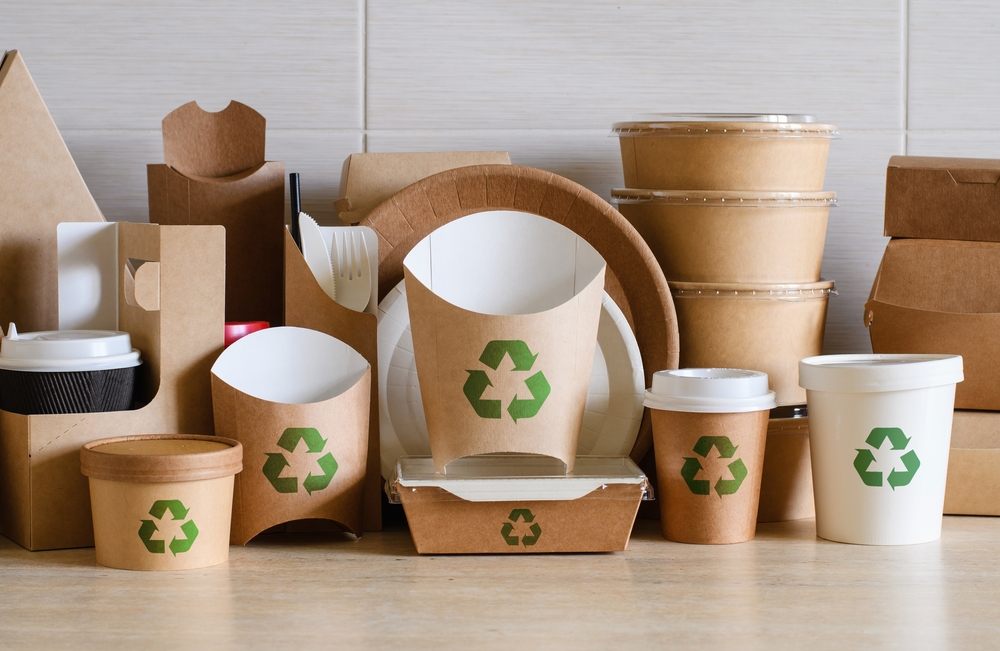Sustainable Packaging Statistics: Why Eco-Friendly Packaging Matters
The sustainability movement is becoming more prevalent today, with public and private sectors starting to practice and regulate sustainability initiatives. Consumers now recognize sustainability as a critical driving force in their decision-making, packaging included.
According to a recent consumer study, sustainability is a valuable purchase criterion for 60% of consumers globally, with the U.S. boasting a percentage a little above the global average at 61%.
The public is fast realizing the importance of sustainability and how it significantly contributes to saving the Earth. With this societal goal firmly entrenched into consumers’ consciousness, companies must formulate strategies to cater to this new demand.
Business owners and professionals in the procurement or packaging field have much to know about sustainability and how it can impact their business. If you fall into these categories, this article will help you learn more about notable sustainable packaging statistics, facts, and reasons it is the way for your company to channel your green efforts.
An Overview of the Sustainable Packaging Market
- The sustainable packaging market industry is projected to grow to $737.6 billion by 2030
This estimate is due to major private and public organizations looking to expedite their switch to eco-friendly packaging in line with market expectations. The increase in market size may also be due to the more significant use of sustainable packaging in the food and beverage industry.
- Food and beverage is the leading segment in the global green packaging market in terms of application
The COVID-19 pandemic played a part in the increased dependency and usage of packaging in the food and beverage industry. Food deliveries became essential in compliance with the safety precautions during the lockdown period, leading some companies to consider environmentally-friendly product packaging alternatives.

- China overtakes the U.S. as the top global packaging market
Packaging usage continues to rise in Asia, with China, India, and Indonesia at the forefront of sustainability efforts. Results from a survey in these three countries showed that all feel more strongly than other regions about sustainability problems. These Asian countries also have the highest willingness to pay more for sustainable products.
- The green packaging market is expected to climb at a 6.1% compound annual growth between 2020 and 2028
Along with increased consumer awareness and strict legal bans on single-use plastics, the green packaging market may grow exponentially in the ensuing decade. The market’s growth is attributed to the food service industry replacing single-use utensils and packaging with eco-friendly alternatives such as folding cartons and compostable material or paper.
- The recycled content packaging segment is the highest revenue contributor to the market, with a 6.5% CAGR
Implementing stricter regulations and policies and the growing concern for the environment are pushing different industries to utilize green packaging techniques to reinforce their sustainability efforts.
The fast-moving consumer goods (FMCG), pharmaceutical, and personal body care sectors are at the forefront of the market’s transition to sustainable materials, and bioplastic materials may play a significant role in the growth of sustainable packaging.
Customer Behavior Trends on Sustainable Packaging
- 73% of consumers say they’re keen to change their purchasing habits to reduce their harmful impact on the environment
The new generation of consumers has exhibited increased awareness regarding the products they buy and their packaging. According to a survey, 41% of respondents stated they’re willing to pay higher prices for organic products and those that can help the environment.
- 67% of buyers find it important that their purchases are in recyclable packaging
A study shows that 54% of consumers ages 44 and under consider sustainable packaging when purchasing a product, leading the charge in this trend. Within that age group, 83% have said they’re willing to pay more for products sustainably packaged. This statistic is a testament to millennials’ and Gen Zs’ commitment to green marketing.

- About 50% of US consumers and 82% of consumers across Europe, North America, and South America are willing to pay more for sustainable packaging
As the buying public becomes more aware of the adverse effects of unsustainable packaging, the demand increases for sustainable options. Consumers’ attitudes and behaviors toward sustainable packaging continue to evolve, allowing for new insights and opportunities to emerge within the industry. U.S. consumers, in particular, have willingly stated they’re prepared to pay a premium for sustainable packaging across different end-use areas due to their commitment to sustainability.
- Consumers no longer base purchases solely on brand or price; sustainability is now a critical determining factor
Consumers nowadays are more environmentally conscious, so corporations can no longer rely on their name value alone. According to an international study by Unilever, 33% of the 20,000 surveyed customers chose brands they believe are doing something “environmentally good.”
- During the pandemic, 58% of consumers stated they’re more likely to purchase products with reusable or recyclable packaging
The global health crisis significantly altered consumers’ buying habits due to heightened food safety and hygiene sensitivity. Today, buyers are keener on purchasing items they can reuse in the future to ensure cleanliness and safety than those that can be disposed of easily. Thus, the spike in interest in recycling and reusable packaging.
Sustainable Packaging and Its Environmental Impact
Consumers are transitioning to sustainable packaging due to its positive environmental benefits. Here are some examples of sustainable packaging helping conserve the planet and its resources.
1. Reduced solid waste
According to a U.S. Environmental Protection Agency (EPA) report, packaging and containers account for a significant portion of municipal solid waste. In 2018 alone, 82.2 million tons of solid waste were used, or 28.1% of the total generation.
Using recyclable and reusable materials allows you to cut down this staggering figure. By switching to an eco-friendly alternative, your business can aid in reducing the amount of solid waste in landfills.

2. Lesser dependence on fossil fuels
Fossil fuel is a non-renewable resource—unfortunately, 99% of all plastic products require it for production. When fossil fuels are burned, they release large amounts of carbon dioxide, causing an extensive release of greenhouse gas into the air, which is highly harmful to the planet and can exacerbate global warming.
Fortunately, using green product packaging enables you to reduce your company’s carbon footprint caused by packaging manufacturing.
3. Decreased use of natural resources
A minimalist approach to packaging design contributes to the overall preservation of natural resources. Adopting this package production method ensures the conservation of renewable materials for future generations by allowing natural resources to replenish.
4. Increased energy efficiency
Traditional packaging relies on burning fossil fuels for its manufacturing process. As previously mentioned, fossil fuel is harmful to the environment and is a non-renewable resource that takes millions of years to form underground before its ready for extraction.
For sustainable packaging manufacturers, the green initiative does not stop with the materials used. Organizations that switch to eco-friendly packaging do their best to use alternative power, such as solar or wind energy, which bodes well for the environment and sustainability initiatives.
5. Extended shelf life
One of the most significant driving factors that pushed manufacturers to use sustainable packaging is to gain consumer favor.
Food products have an extended shelf life when packaged in sustainable material.
For instance, low-density perforated polyethylene packaging can extend the shelf life of fruits such as bananas to 30 days. Using environmentally friendly products also gives consumers added value and reduces waste in landfills by 20%.
U.S. Regulations that Drive the Sustainable Packaging Switch
The U.S. is one of the countries that has shown an increased focus on transitioning to sustainable packaging. Here are some U.S. laws and regulations that drive the switch to sustainable packaging and help the country reach its goals.
1. CLEAN Future Act
The CLEAN Future Act tasks all federal agencies of the U.S. government to reduce greenhouse emissions to at least 50%. Through this act, the government hopes to minimize gas pollution from 2005 levels by 2030 and achieve zero by 2050.
To help govern this initiative, the government enlisted the help of the EPA to monitor, report, and make recommendations to each agency’s plan annually.
2. New York City’s Styrofoam ban
New York’s (NY) first Styrofoam ban happened in 2015, but before the imposition of fines, a NY Supreme court judge overturned the ruling. The judge stated that NY coalition recycling firms and plastic manufacturers had offered feasible recycling plans to their consumers.
Fortunately, the ban on single-use Styrofoam containers has been reinstated. The ban applies to food service establishments within the city, including stores and mobile food trucks offering or selling polystyrene packaging.

3. California Safer Food Packaging and Cookware Act of 2021 (AB 1200)
California (CA) Governor Gavin Newsom signed AB 1200 into law in October 2021. Effective January 1, 2023, the law imposes a total ban on producing, importing, and using paper-based food packaging containing perfluoroalkoxy (PFA).
Additionally, it requires cookware producers to be transparent about the possible harmful materials and chemicals used in their production.
Findings that link PFA to cancer, physical and environmental harm, and vaccine disruption pushed the California local government to pass the act. The enactment of AB 1200 ensures producers utilize the least toxic alternatives.
4. Heavy metal restrictions
The U.S.’s restrictions on heavy metal compounds ban the intentional and incidental incorporation of metals such as cadmium, mercury, and hexavalent chromium in packaging products. This ban is due to the use of stabilizers, dyes, and adhesives in traditional packaging, which can be harmful to consumers.
Aside from CA and NY, 19 other U.S. states have Toxics in Packaging legislation.
Give Green a Chance
Sustainability in products is no longer an option but a demand, as more people realize the harmful effects of using unsustainable packaging. This growth in awareness led the public to take active measures to help the environment and trust producers to do the same.
Switching to sustainable packaging enables businesses to simultaneously help preserve the environment and cater to the needs of their customers. However, the transition is not always easy, making it crucial to seek help from experts in the field.
If you want to learn more about your business’ packaging needs, look no further than Meyers Printing. Helping customers promote their brand since 1949, Meyers’ mission is to bring your packaging to life with professional printing solutions. To know more about our services, contact us today!

